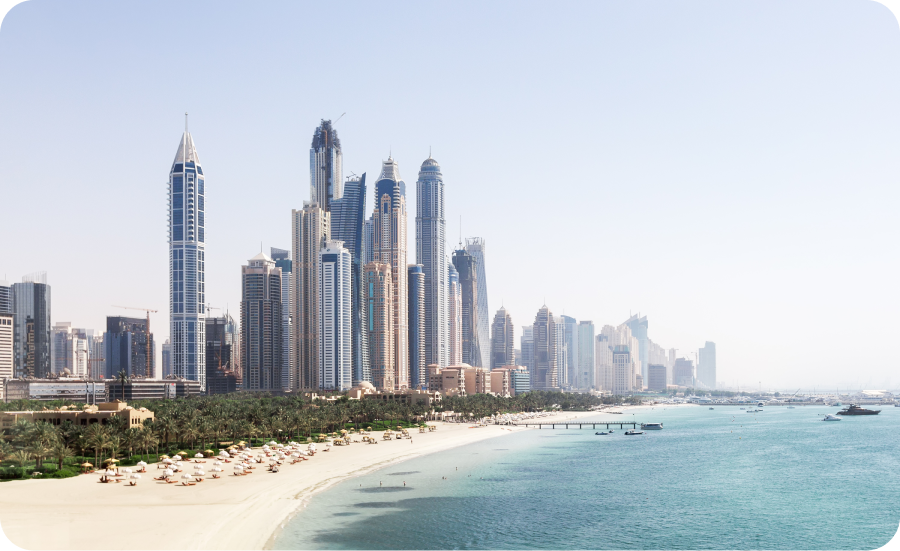This article first appeared on Hubbis.com on March 11, 2022.
Pieter Zylstra took the reins as General Manager at additiv’s APAC division in November last year, moving from the role he took in 2020, when he joined the firm, as head of sales for the region. His mission is to drive the APAC business forward as additiv focuses on becoming a global leader in digital Wealth Management and Wealth Management-as-a-Service orchestration platforms.
Pieter is a believer in embedded finance and embedded wealth, which he says is starting to take off in the region and that represents a multi-billion market. Embedded finance is a natural progression from the FinTech revolution; after making financial services easier to access and significantly cheaper, there is huge value in embedding them within existing user journeys and into third party channels Hubbis met with Pieter again recently to hear him explain more of additiv’s wealth orchestration platform, which in a nutshell is designed to help incumbent players of all types offer digital wealth solutions to their existing customer base or through distributors. And while he focuses so much of his energy on WealthTech architecture, we also heard how the lockdowns in Asia have offered him valuable time to built two hand-crafted traditional Javanese architecture homes in the family compound in Bali.
Pieter is passionate about his role and his mission. He has a vision of how technology innovation creates new disruptive business models and enhances inclusion, especially in financial services. He has been working for 20-plus years in the tech industry, currently with additiv and previously with leading names such as Capgemini in Europe, and T-Mobile and Orange in Asia, Middle East and Africa. He lives today in Singapore and also spends a lot of time in Bali, where he first bought a home roughly two decades ago, and where he has recently built two new traditional Javanese houses in the family compound for his eldest son and daughter.
The democratisation of finance in Asia
“I really do remain passionate about Asia, about Indonesia and also about my role, which is at the crossroads of technology and finance and helping drive the rapid financial inclusion in this dynamic region,” he reports.
He has been Asia-centric since the early 1990s, when mobile phones and the internet seemed like they were only for the very well-to-do, but now there are billions of smartphones worldwide and connectivity in every nook and cranny of the world.
“And with all that and the expanding array of digital solutions, the democratisation of finance and wealth management is a reality,” he says. “I believe additiv is playing a core role in expediting this dramatic and important transition.”
Embedded wealth – into the future
His enthusiasm is evident when he adds: “I believe additiv leads the embedded wealth conversation in APAC.” He explains that embedded wealth refers to the offering of a regulated wealth product by a non-wealth entity and that, although the term ‘embedded wealth’ isn’t yet widely used, it’s potential in the region comes as no surprise.
“There are Super apps in Asia with millions of users that are embedding financial services such as loans, investment, insurance and more into their apps,” he reports. “In Asia, this is dramatic, as we are talking about literally billions of potential users.”
From Switzerland to the world
As a leading SaaS provider, Zurich-based additiv has been a recognised innovator of digital wealth management solutions since the firm’s creation in 1998. Today, additiv partners with the world’s leading financial institutions to help them capitalise on digitalisation, powering many of the world’s leading financial institutions, providing them a superior technology platform to transform and digitize their business model.
Its market leading and trademarked DFS (Digital Finance Suite) is an orchestration WealthTech platform that connects regulated firms with brands looking to embed investment services into their offering. In doing so, it allows to quickly launch new embedded wealth propositions as well as giving them the intelligence to maximise customer engagement.
All this is supported by a broad ecosystem of implementation and solution partners that enable it to deliver to wealth managers across Switzerland, Europe, Africa, the Middle East and Asia, in each region providing global offerings tailored to local markets and needs.
Wealth Solution Builder
In January 2021, additiv added its important ‘Wealth Solution Builder’ to the proposition as a new solution enabling banks and other financial institutions (FIs) to create their own WealthTech end-to-end solution and client journeys on top of an established foundation. Wealth Solution Builder is based on DFS and enables FIs to build unique functionality and client journeys at remarkable speed, including via seamless access to an extensive API catalogue.
Delivering speed and agility
With these tools, and additiv technical staff accessible to support developers, FIs can now easily build in-house with a ready foundation and wide range of components. This brings flexibility and ensures faster time to market, enabling FIs to focus on client and advisor needs at every stage of their system build. The customers thereby sidestep the lengthy and costly process of building the foundational elements of an end-to-end wealth management system themselves, arming themselves with the agility to react fast to the ever-changing market needs.
Different categories of clients
Pieter explains that additiv’s customer base started originally with traditional wealth players, large banks and asset managers, where the firm helps them to digitise their wealth journeys, offering a better service at lower cost. These players are in need to upgrade their existing IT systems with advanced digital platforms, and then also want to expand with new value propositions in other market sectors.
The second rapidly growing client category are the new wealth players who don’t want to invest in the underlying wealth infrastructure, neobanks, insurance companies and consumer brands, but want an end-to-end solution to get to market rapidly and offer differentiated services.
“Between the segments, we have already doubled our customer base from a year ago, as earlier this year we signed a partnership with a large financial institution to build a digital wealth platform in The Philippines, we recently won a contract with one of Indonesia’s top 10 banks to replace the existing wealth legacy systems, and we will be launching our Wealth-as-a-Service platform with a Singaporean launching customer next quarter.”
Real world examples
Pieter offers some examples of this and other solutions additiv provides. He points for example to Australia’s Commonwealth Bank in Indonesia. A few years ago, the bank was looking for a wealth orchestration platform to increase the services that they can offer to their existing customers, high net worth individuals, but also allow the flexibility to tap into new markets, especially the mass affluent market.
“We provided our additiv platform about two and a half years ago,” he reports. “It’s a great success. They have doubled their users over the last six months. By having a flexible platform where they can orchestrate new user journeys, they can offer improved services to their existing and new customers, and as a result have grown substantially. And Indonesia is a tough, competitive market.”
Scalability at reduced cost
He elaborates on this, remarking that additiv’s solution provides scalability and reduced costs. “Banks no longer have the manual workload associated with doubling a customer base, because these clients no longer go to branches and fill in lots of paperwork, as onboarding, collaboration and transaction processes all become digitised,” he explains. “additiv DFS platform is an excellent wealth solution to scale for the mass affluent market.”
Other Financial solutions
He also points to additiv’s risk management solution, citing a global bank operating in Singapore, where the additiv platform provides support for booking centres globally. Using the additiv platform solution, the bank can perform a full look-through of the portfolios of hundreds of thousands of customers and identify risks in various areas. “Although we are mostly known for our DFS wealth platform, we have solutions for risk-management, credit and lending as well,” he explains.
The additiv edge
Pieter offers his perspectives on why customers sign up with additiv. “Wealth executives are increasingly aware that the market is moving in directions that they cannot yet foresee, where future competitors can actually become distribution partners, , so they first and foremost need a partner who can provide a flexible IT system,” he explains.
“With our cloud-based and immensely open platform solution, they can move fast to capture these opportunities,” he adds. “We have an outstanding set of existing clients to assure them of our capabilities, and we open the doors for our new clients to talk with our established customers. They soon see that we have the skills, we deliver, and we represent ‘Swiss’ quality and integrity. In this way, they know they are buying into solutions that have been proven with big-name global and regional institutions.”
Tracking the trends
Pieter highlights the never-before immensity of the opportunity opening up for wealth management in the region, as tens of millions of people in Asia arrive at the stage of having more money to invest and seek higher returns away from traditional bank deposits.
“They want their money to grow,” he reports, “and tens of millions of them have never had any experience other than going to their branches for paperwork, advice and information. But now they want fast, easy access to products, advice, reporting; they want mobile, 24/7 and instant gratification. This is the dramatic expansion of the mass affluent wealth market in this dynamic region.”
The obvious outcome is that the traditional financial institutions want to win a slice of this vast and valuable mass affluent market opportunity. Equally newer players want to move in at speed, offering their products and solutions and partnering with companies like additiv which can help to fast-track their propositions.
He notes that this is where embedded finance comes to the forefront as well, with established super-apps such as Grab, Gojek, Kakao, Rakuten and others shifting their focus to retail financial services, and later to wealth services, for example in the future offering robo-advisory and model portfolios.
“These big tech players have hundreds of millions of customers and can move incredibly fast,” Pieter observes. “Their scale means they can drive marginal costs towards zero, so they are in an incredible position to compete.”
And for all categories of these clients, Pieter states that additiv’s track record is compelling. “We have the client list, the ability to deliver rapid platform expansion at low marginal costs, and we offer customers immense platform flexibility,” he says.
Key Priorities
Pieter reports the first mission is to have a full-service office for APAC within Asian time zones. That means developers, architects, project managers and a 24-hour help desk. “We are centred in Switzerland but expanding rapidly across many regions. In Asia, growth potential is huge, and we are targeting a full-service office in Singapore and potentially reaching out into regional satellite offices, as we grow the client base.”
His second priority is to expand the ecosystem partnerships to be able to provide an end-to-end Wealth-as-a-Service platform solution for new market players. And the third objective is to double the revenue base in three years.
The APAC strategy
He draws this part of the conversation towards a close by offering more insight to additiv’s strategy in the region. He explains that additiv’s investments are mostly focused on the embedded wealth platform, and in APAC there are three regions that are most logical for expansion. Singapore and surrounding ASEAN countries, such as Indonesia, Malaysia, Thailand and the Philippines, with data hosted in Singapore. Hong Kong is important in itself and as a bridgehead to China as well as to the countries and regions covered through WealthConnect. Equally the Australian market offers considerable potential.
“If we look at embedded platforms, where the customers want to offer end-to-end wealth services with ecosystem partners, we must be present in these markets,” he reports.
Pieter adds that although this is not his region, additiv is also soon to launch a Sharia wealth platform in Saudi Arabia. “Sharia wealth is of course very important in Malaysia, Brunei, Indonesia and in other parts of this region,” he says. “Sharia wealth is certainly a core area we will be building further upon.”
Playing for real in the additiv ‘Sandbox’
He closes by noting that additiv is able to move rapidly for new clients due to its sandbox offering. The sandbox enables the firm to speedily create a microcosm platform that allows the clients to test the functionality of the system, define its user journeys, and for the key business teams to then demonstrate it to their decision-makers.
“We offer this as a very attractively priced sandbox proposition,” he reports. “In the space of only two or three months, the key internal drivers of these decisions can prove its efficacy to the people ultimately writing out the cheques. The number one demand we have is for us to help those who see the value sell it to their top management, many of which are somewhat confused by all the different solutions and vendors. In short, the sandbox allows the wealth divisions of existing customers, traditional players, wealth managers, retail banks, and also the new entrants to enjoy a risk-free experience that helps the final decisions over the line. And it really works.”
His final word is that there has never been a more disruptive time in the financial services industry, particularly in APAC, and digital wealth management is no exception. “With client demographics changing rapidly, and new market players emerging, there is now a different expectation as to how and where wealth management services should be offered. At additiv, we are remarkably well placed to be part of these exciting developments.”
Getting Personal
Pieter hails originally from the Netherlands, and reports that his bloodline is the Frisian tribe. “Like the British have Wales and Scotland with their own languages, the Dutch have Fryslân, and the Frisians are like the Welsh, proud of their heritage. In fact, Frisians will often let people know that we do not really have a drop of Dutch blood in our veins.” He explains that the Frisian language is closely relate to Old English language. “There are some half a million people from that region who speak Frisian, even today,” he reports.
He studied at two universities. The first was Leiden University, the oldest in the Netherlands, where he studied Indonesian Language and Philosophy. He also studied Organisational Sociology for his Master’s at the Twente Technology University. “I actually did those two studies alongside each other, so there was a lot of back and forth between the two institutions,” he reports.
His first job was in Jakarta in 1996 for T-Mobile, part of Deutsche Telekom, working with the leading mobile telecoms firm in Indonesia at the time. “That was pretty much right early on in mobile taking grip and the internet expanding, and I was hired because I could speak German and the Javanese language, so I was able to translate German humour into Javanese and get things done.”
Pieter explains before joining T-Mobile, he was already in the country. “I have long had a fascination for Indonesia and even spent two years studying at an Indonesian University centred on Javanese philosophy and with an aim to pursue an academic career in Indonesia,” he explains. “I love the energy, dynamism and culture of Indonesia, and still do today, which is why although I live in Singapore, we have a home in Bali, and have done for more than 20 years.”
Pieter has created his own bloodline, with four children aged between 24 and 13. The older two, his 24-year-old son and daughter of 21 are studying in The Netherlands. The boys are 17 and 13 and at school in Singapore.
Lockdown has been positive in some ways for Pieter and family, as it has helped him avoid the constant travel of the past two and a half decades. “It is good for all of us I feel to take a bit of time away from planes, airports, and the constant running here and there,” he says.
The hiatus of some two years already has allowed him valuable time to focus on a project he had planned for some time, namely to build two more houses in the family compound in Bali, replete with traditional Javanese architecture. “That has been a total joy,” he enthuses. “One house is for my oldest son, who hopes to move back to Asia after his studies, and the other for my daughter. Maybe in the future, we can build more, but that will need more time and money.”
He explains that his early love for traditional Asian architecture came from visiting the Jim Thompson house in Bangkok, when he was just 20 and on his first visit to the region. “It was a total eye opener, and really inspiring,” he says. “Then when I was studying in Java, I took my motorbike and explored the countryside, and saw all these wonderful old traditional buildings. Those times are the origin of my passion for traditional Asian architecture and workmanship.”




